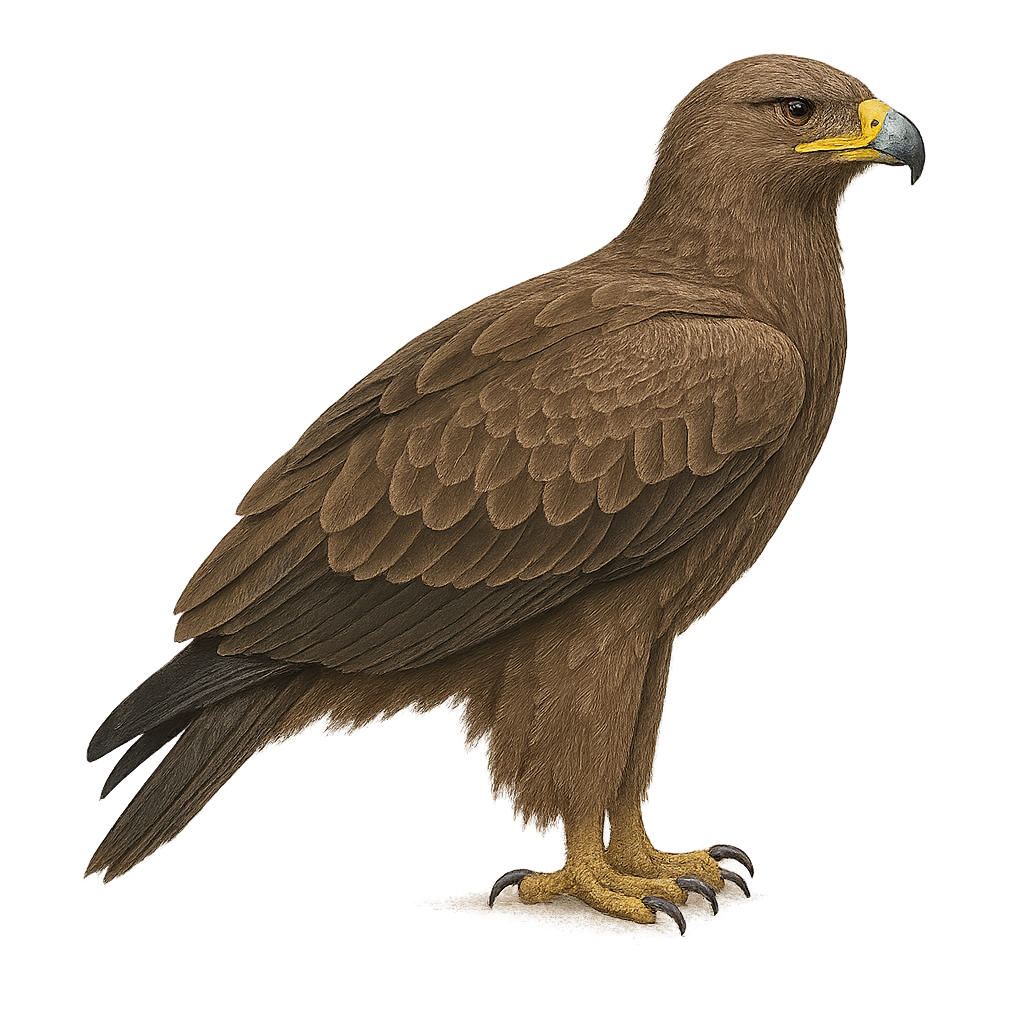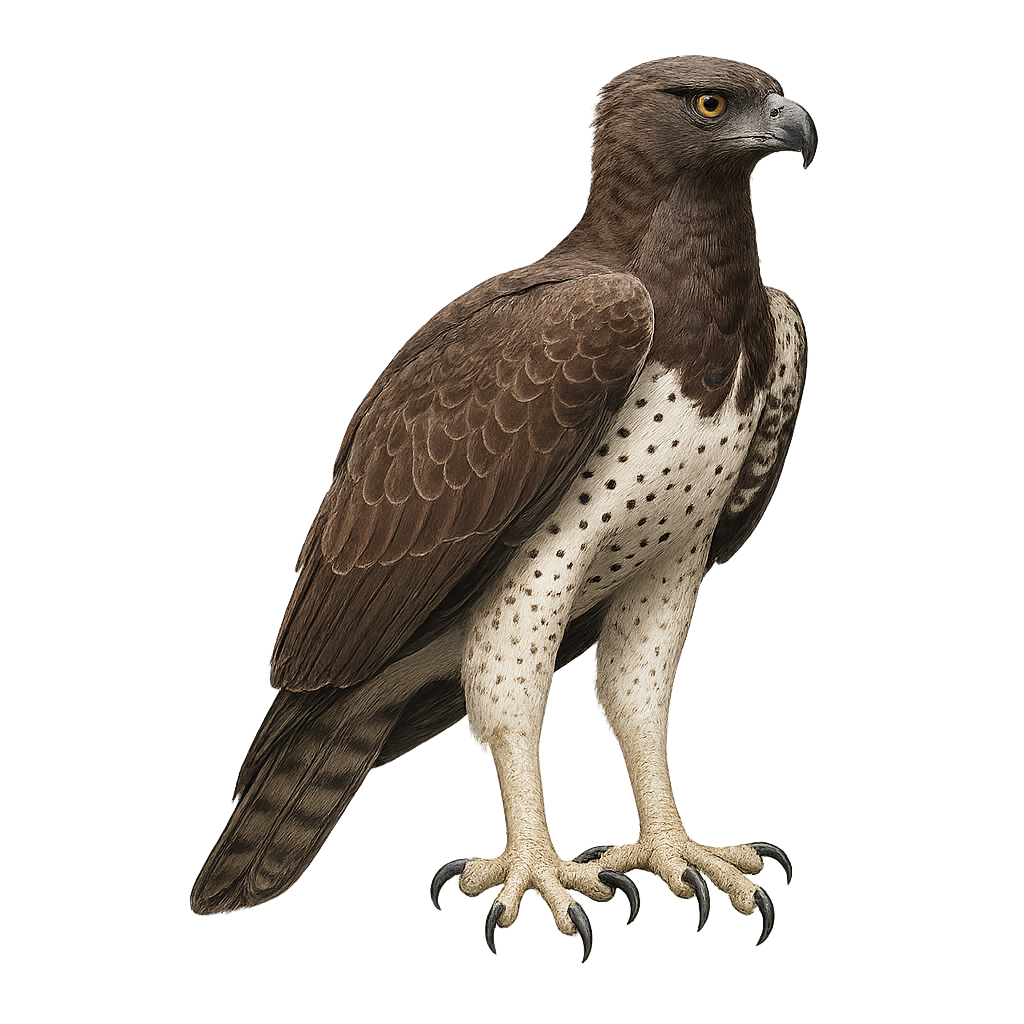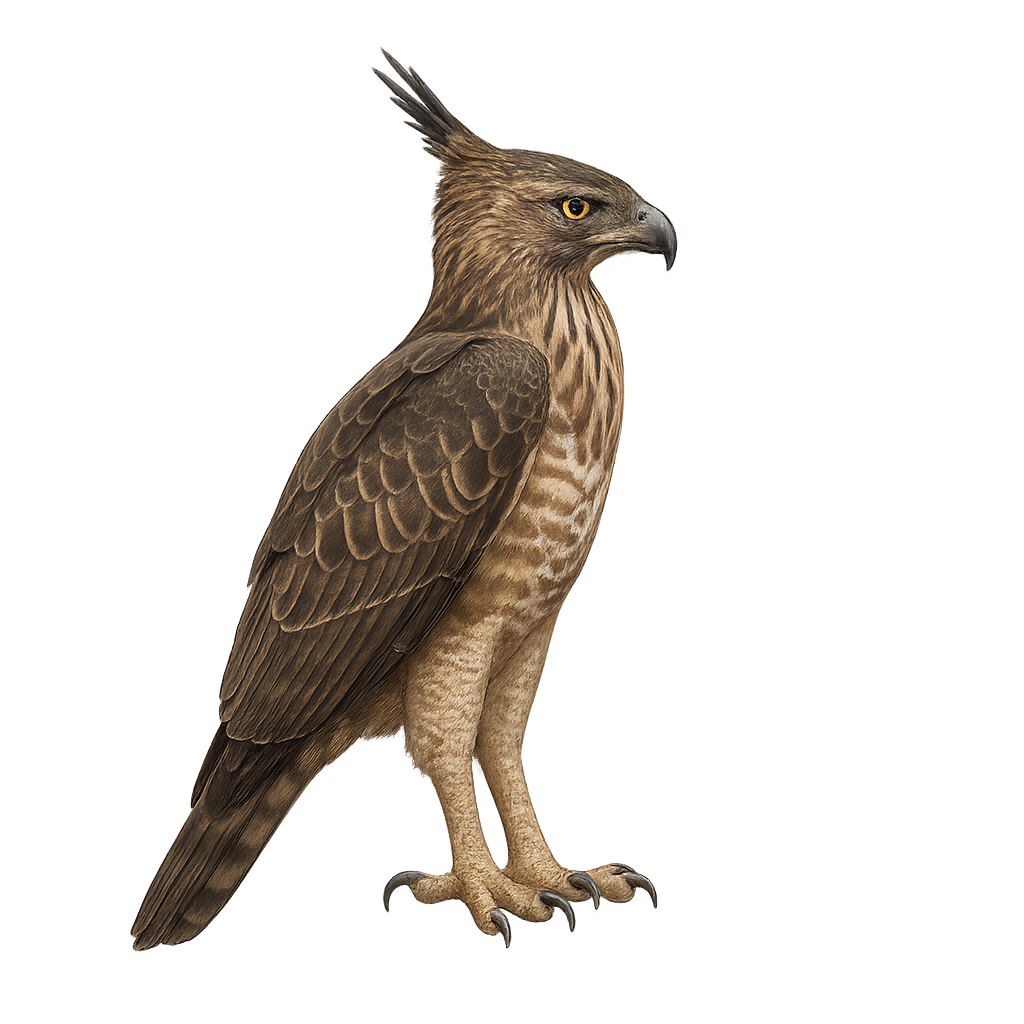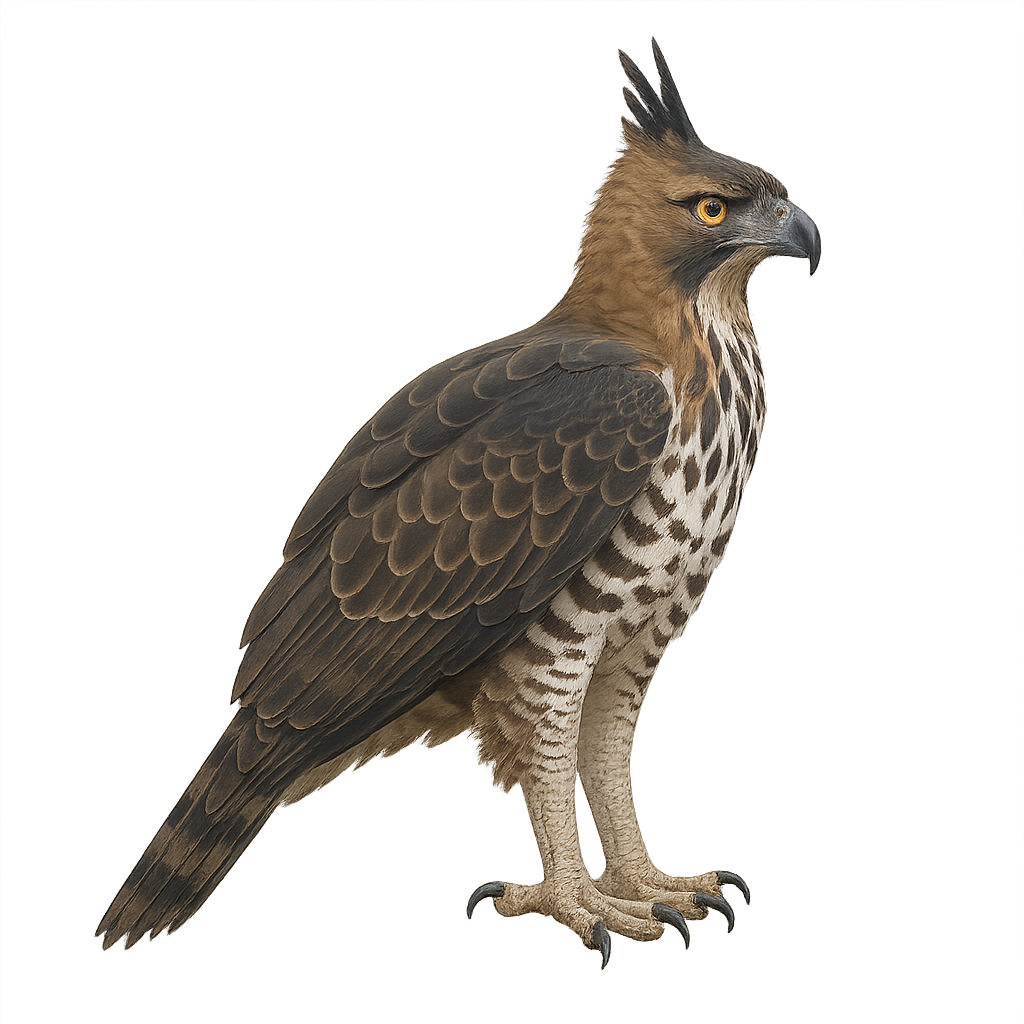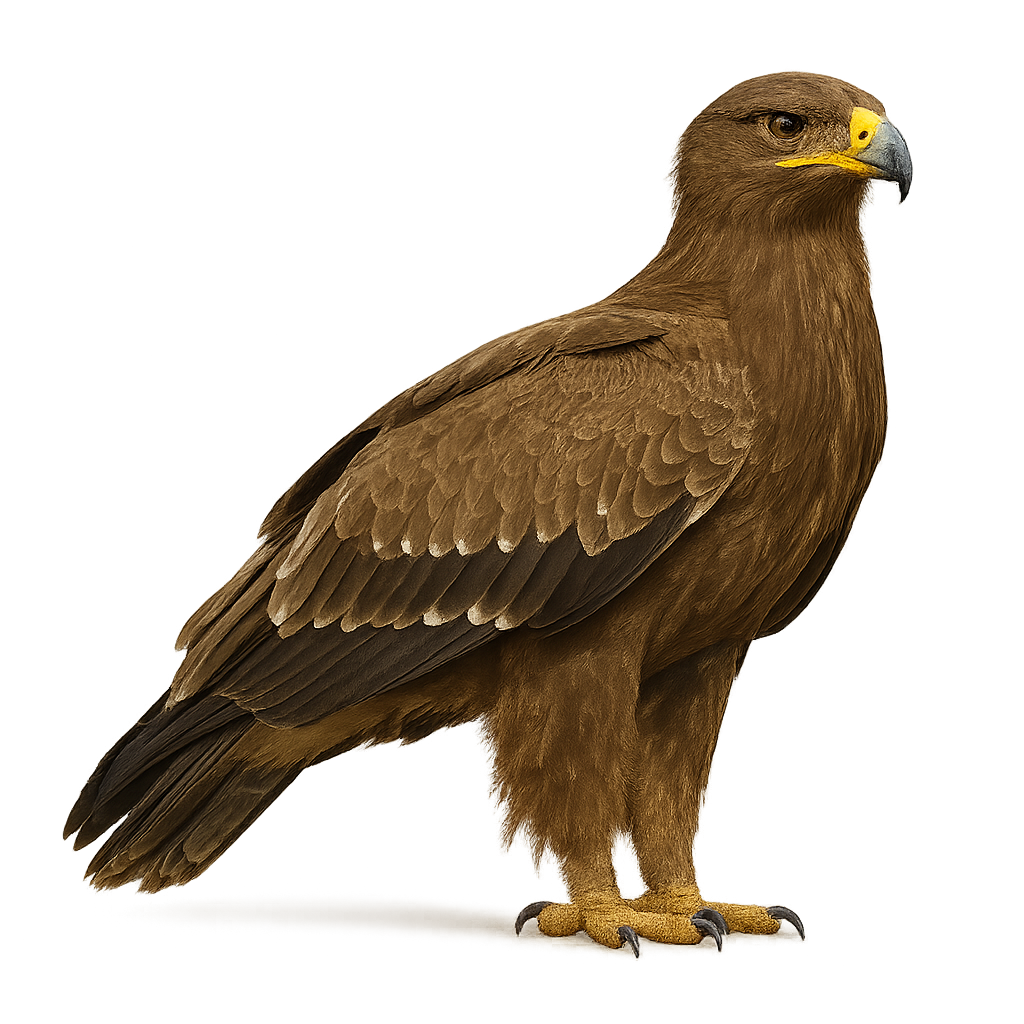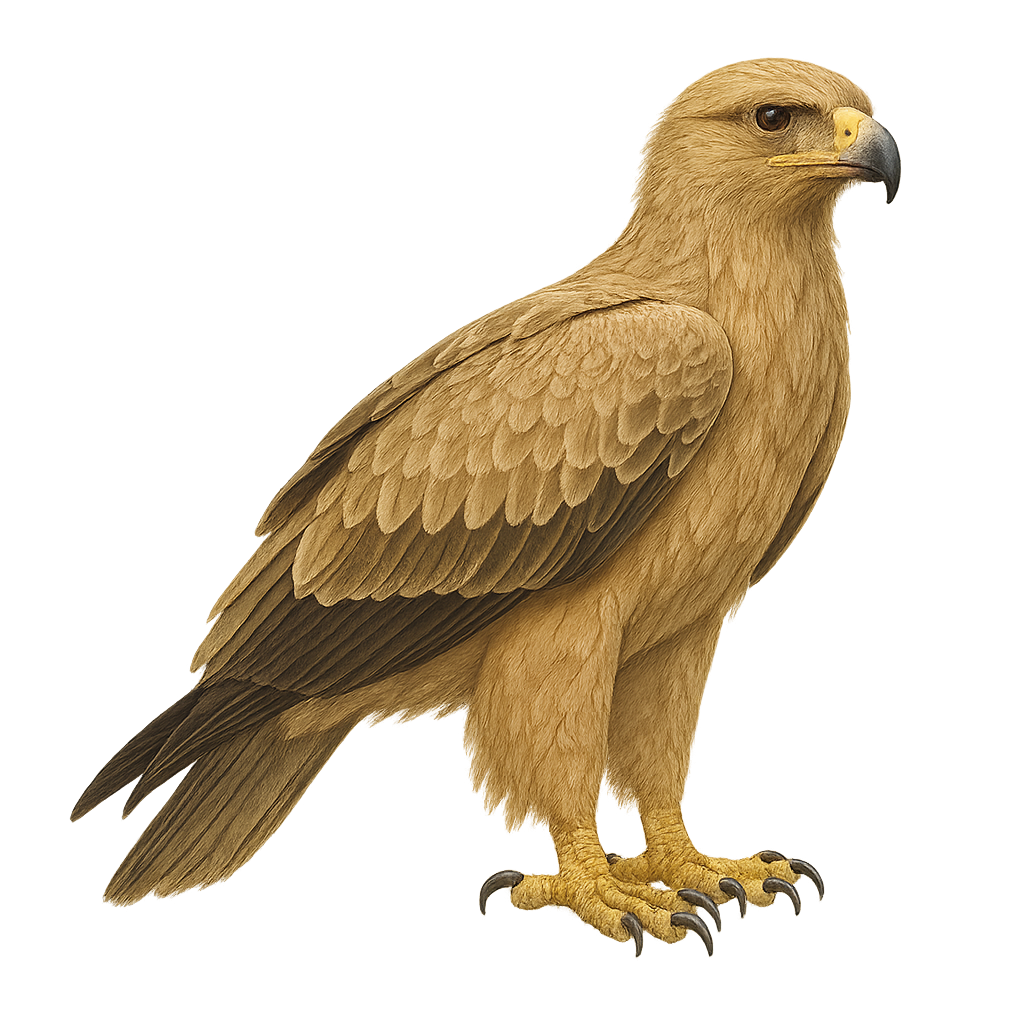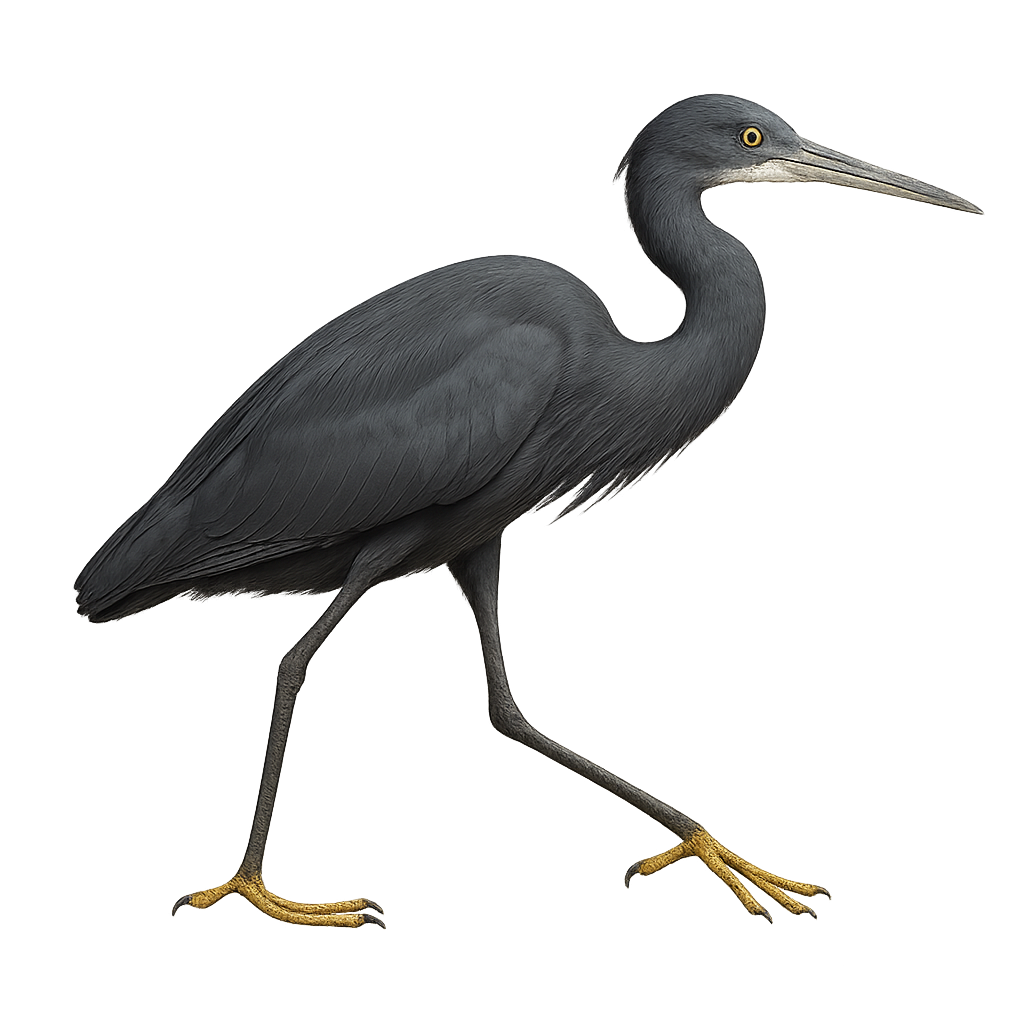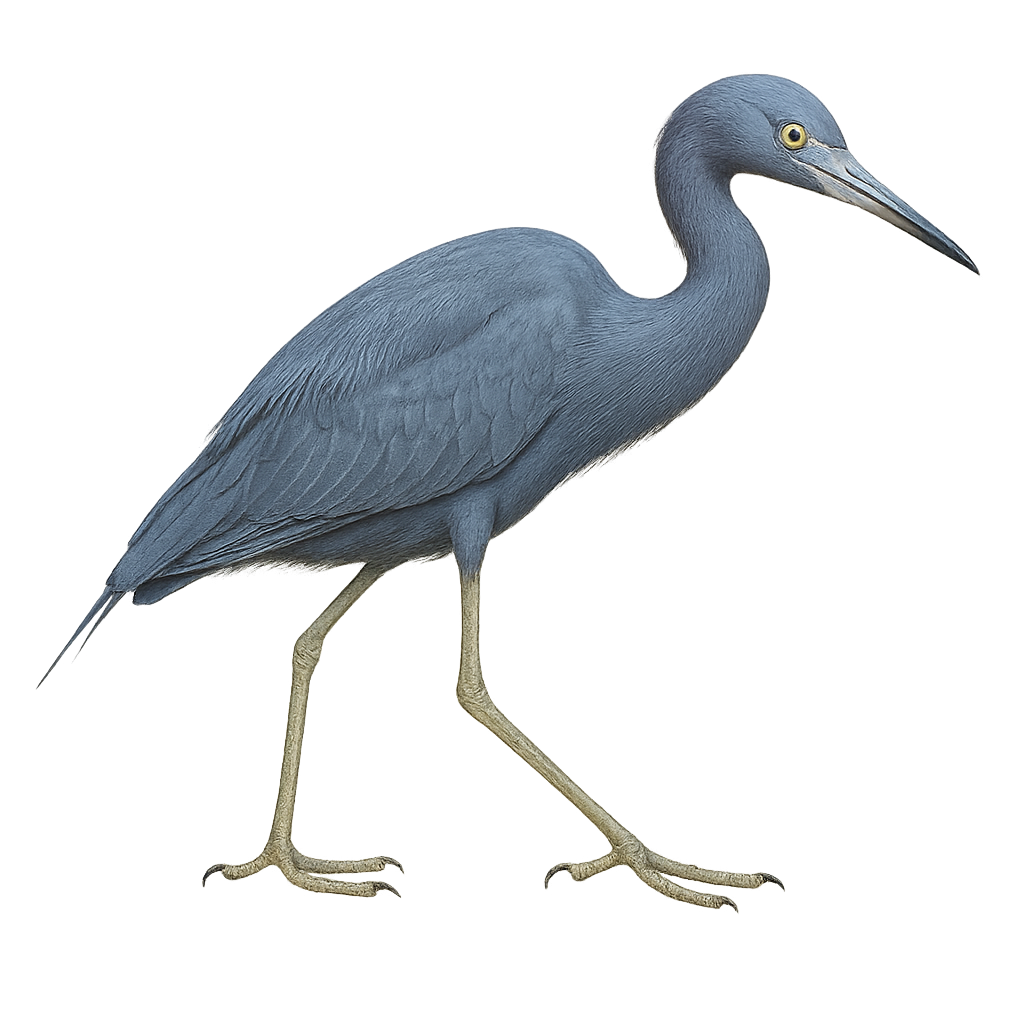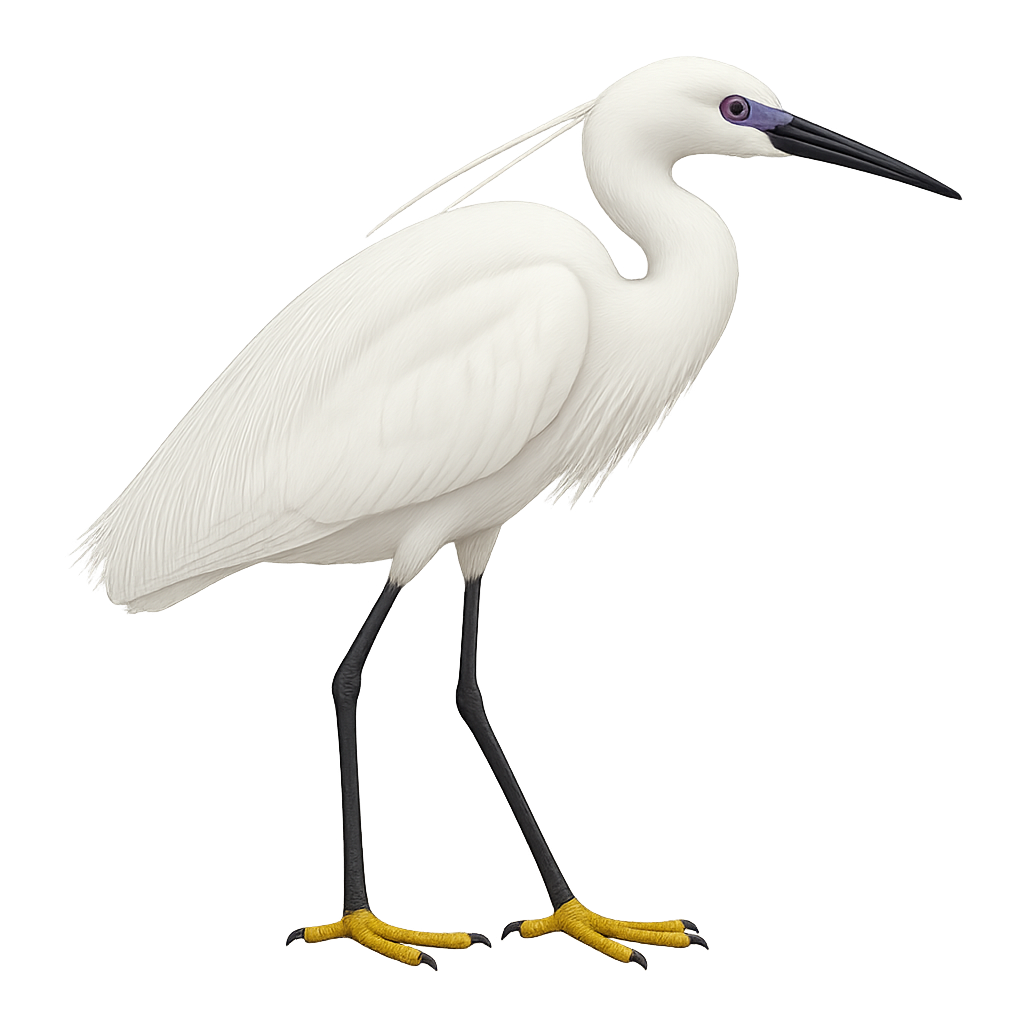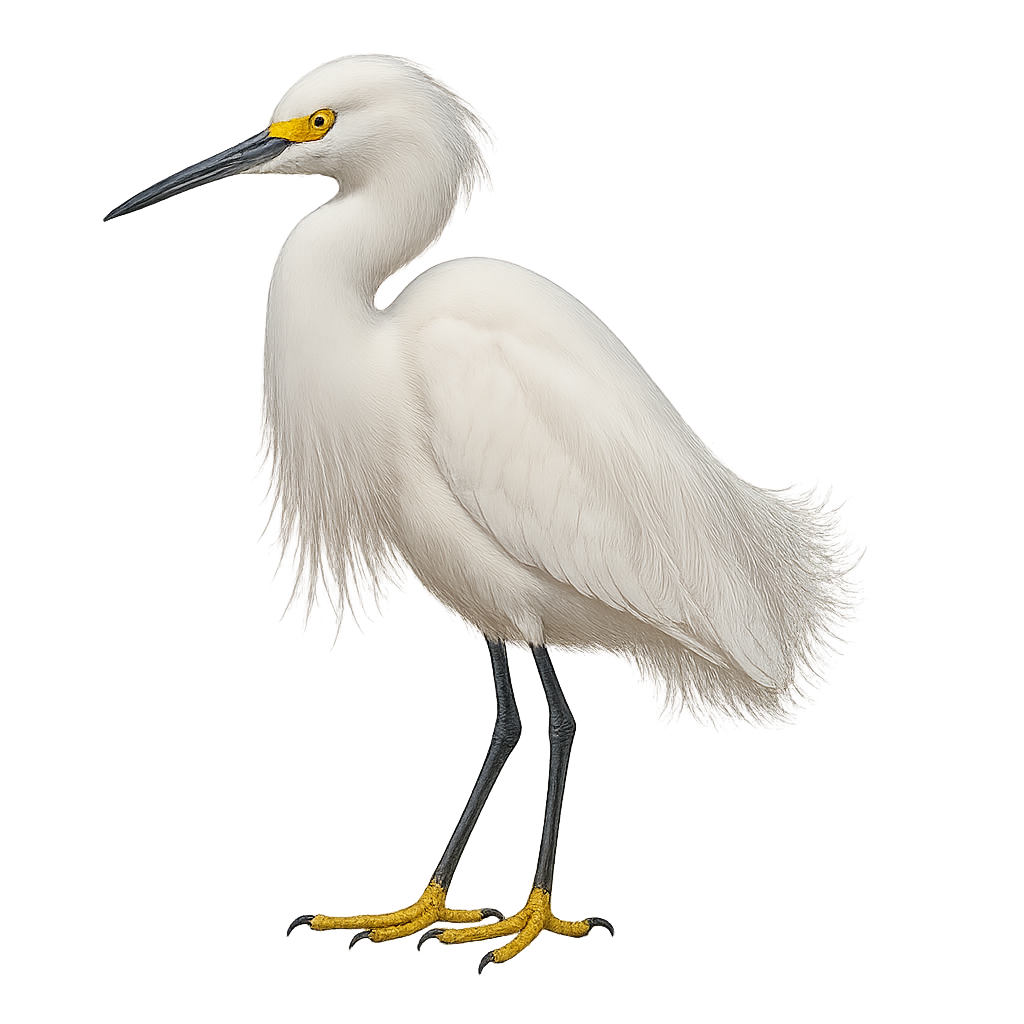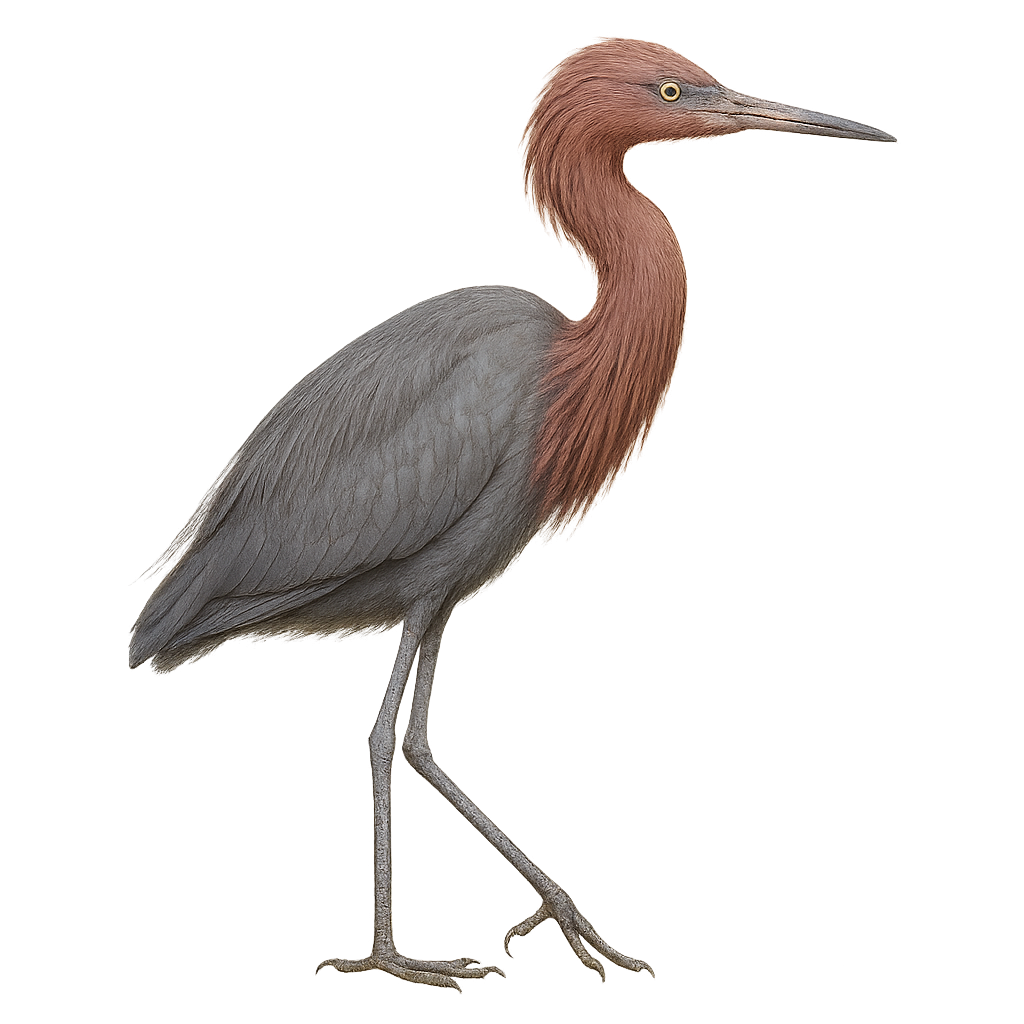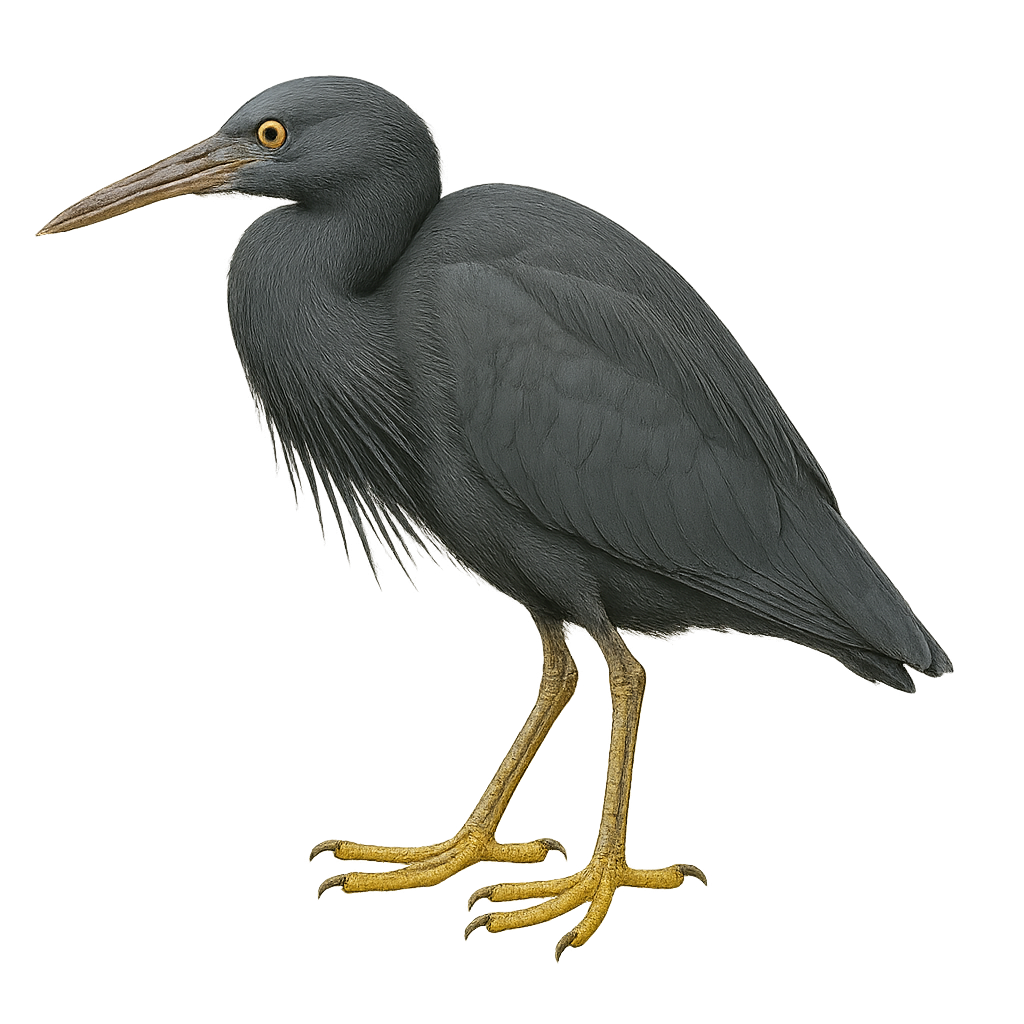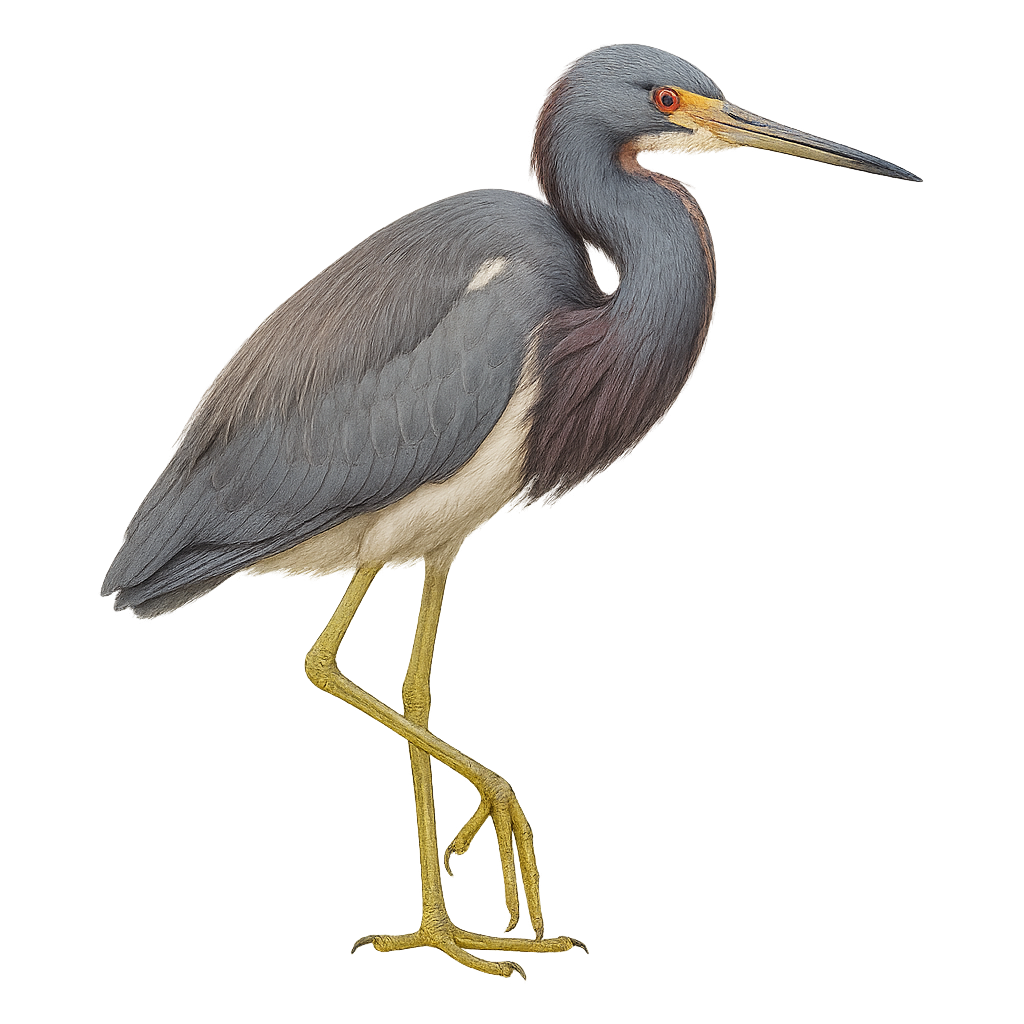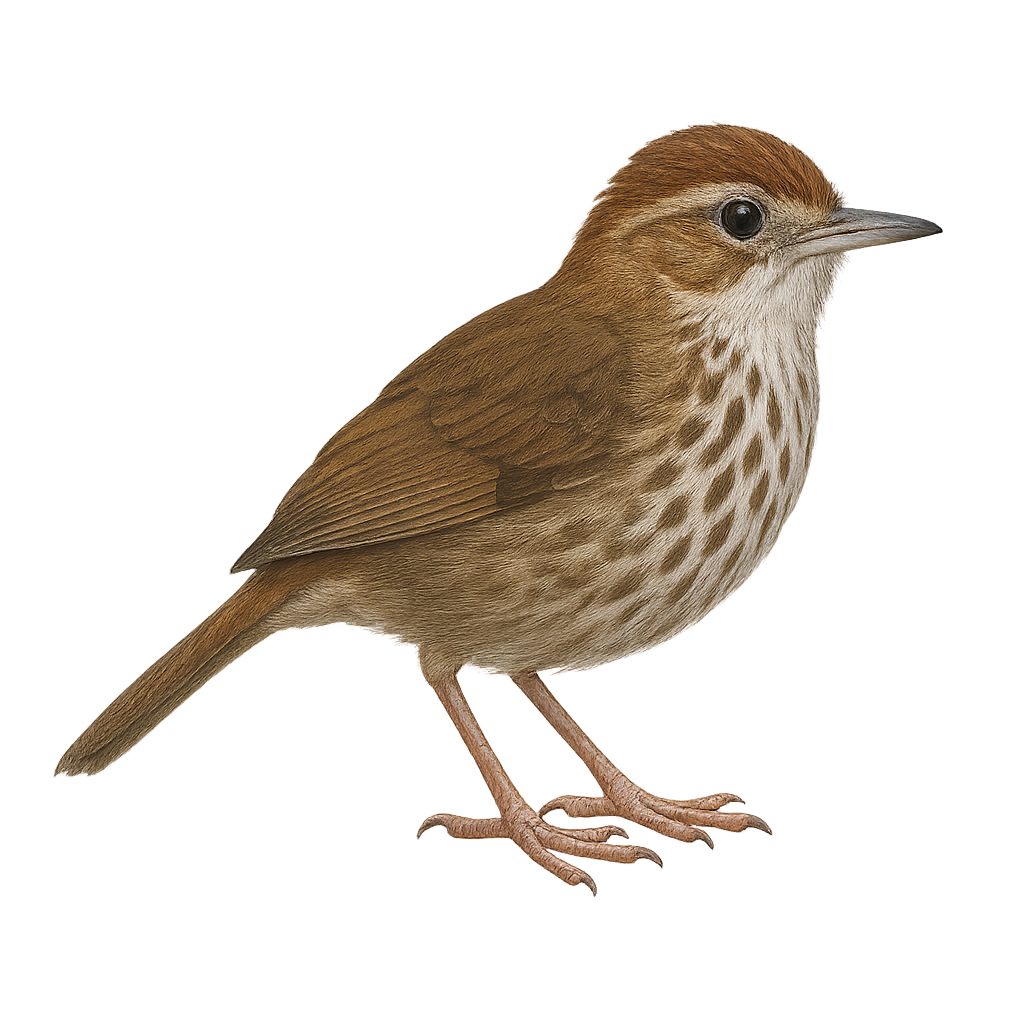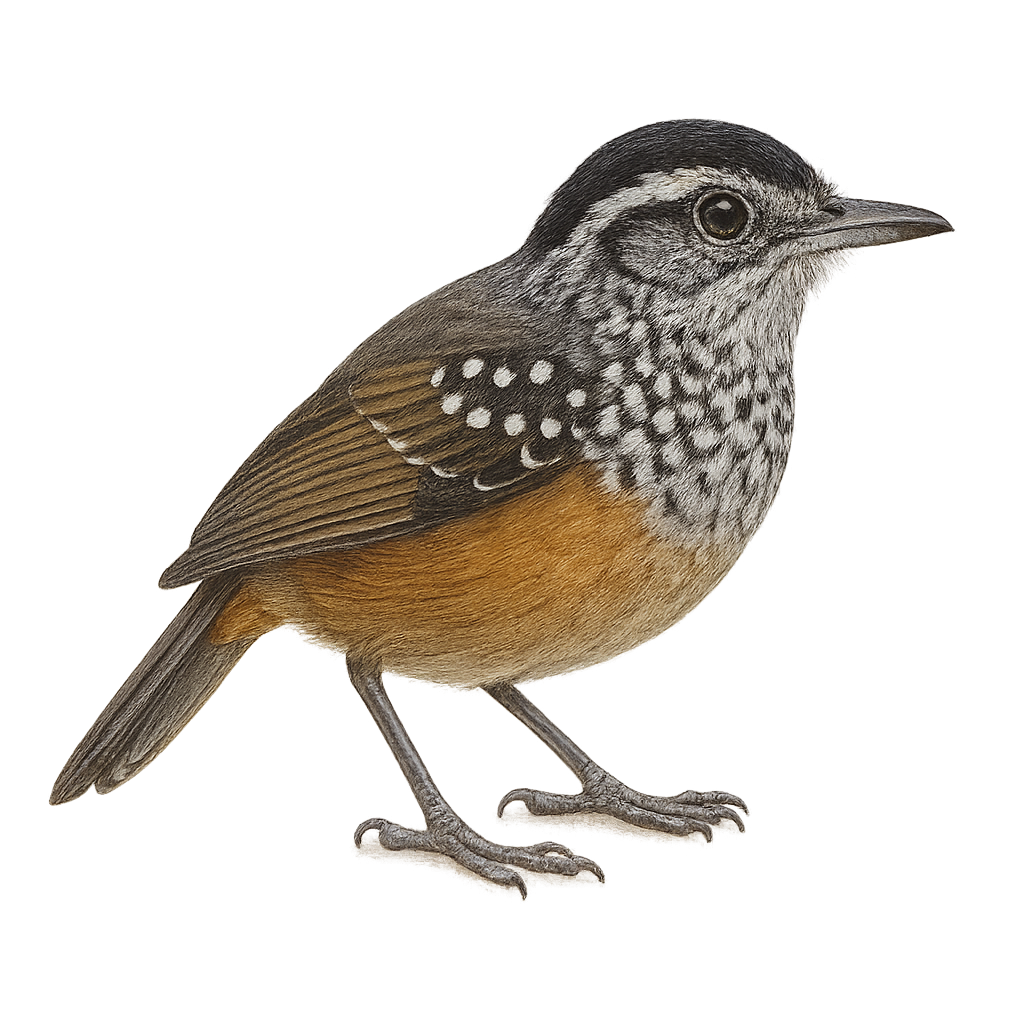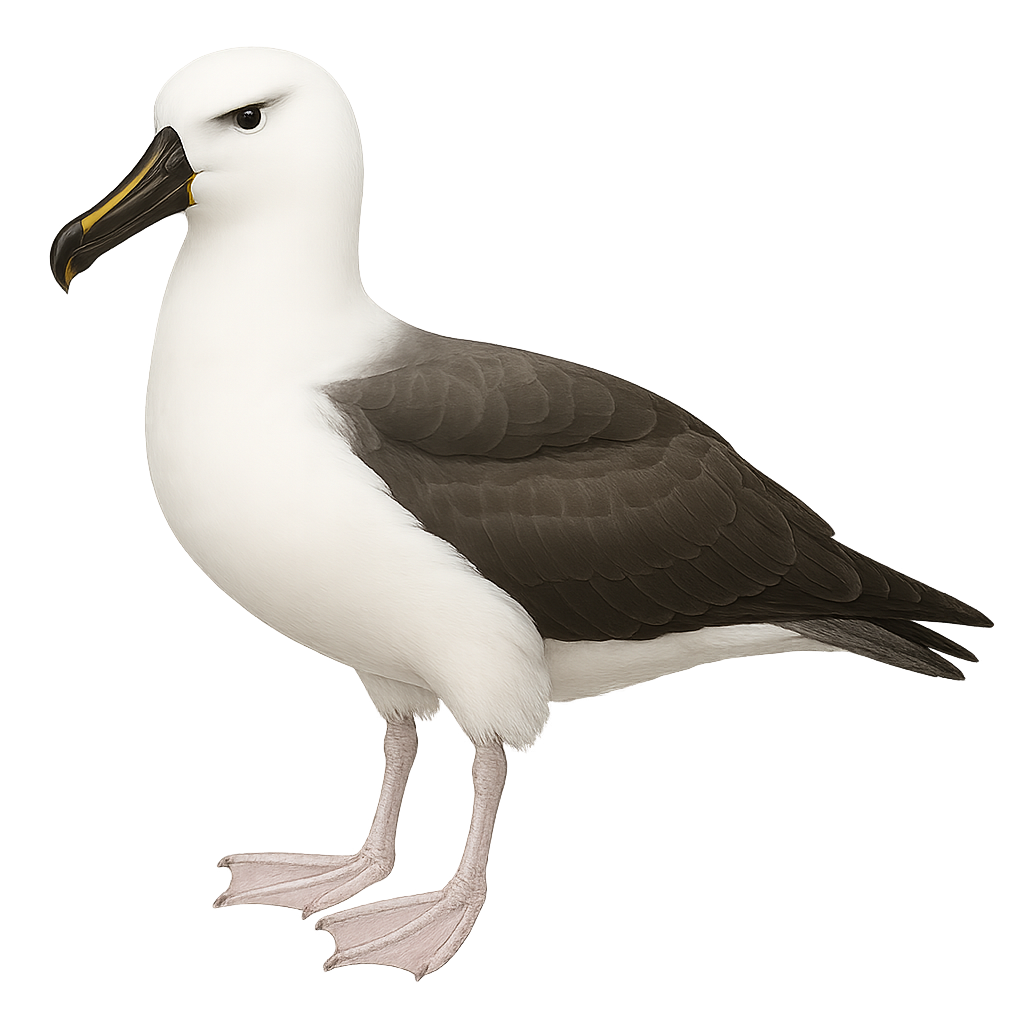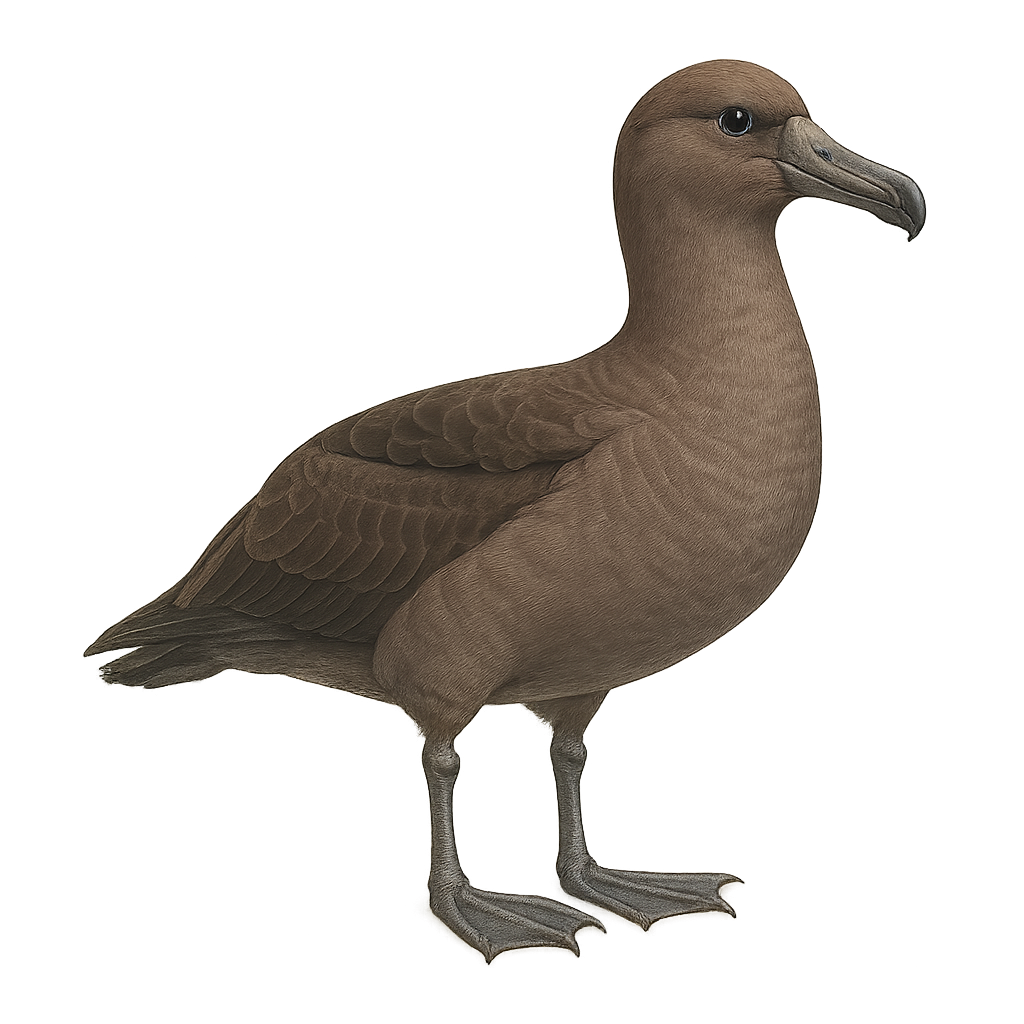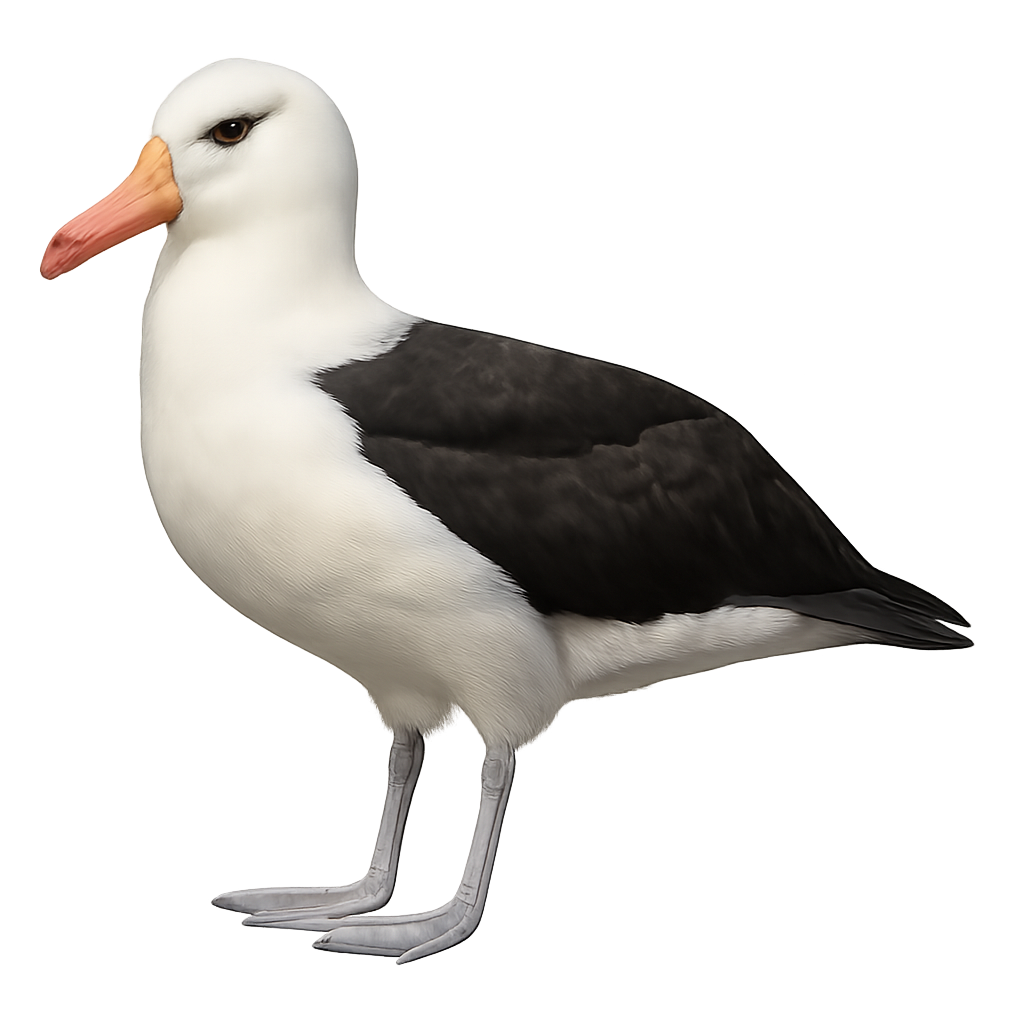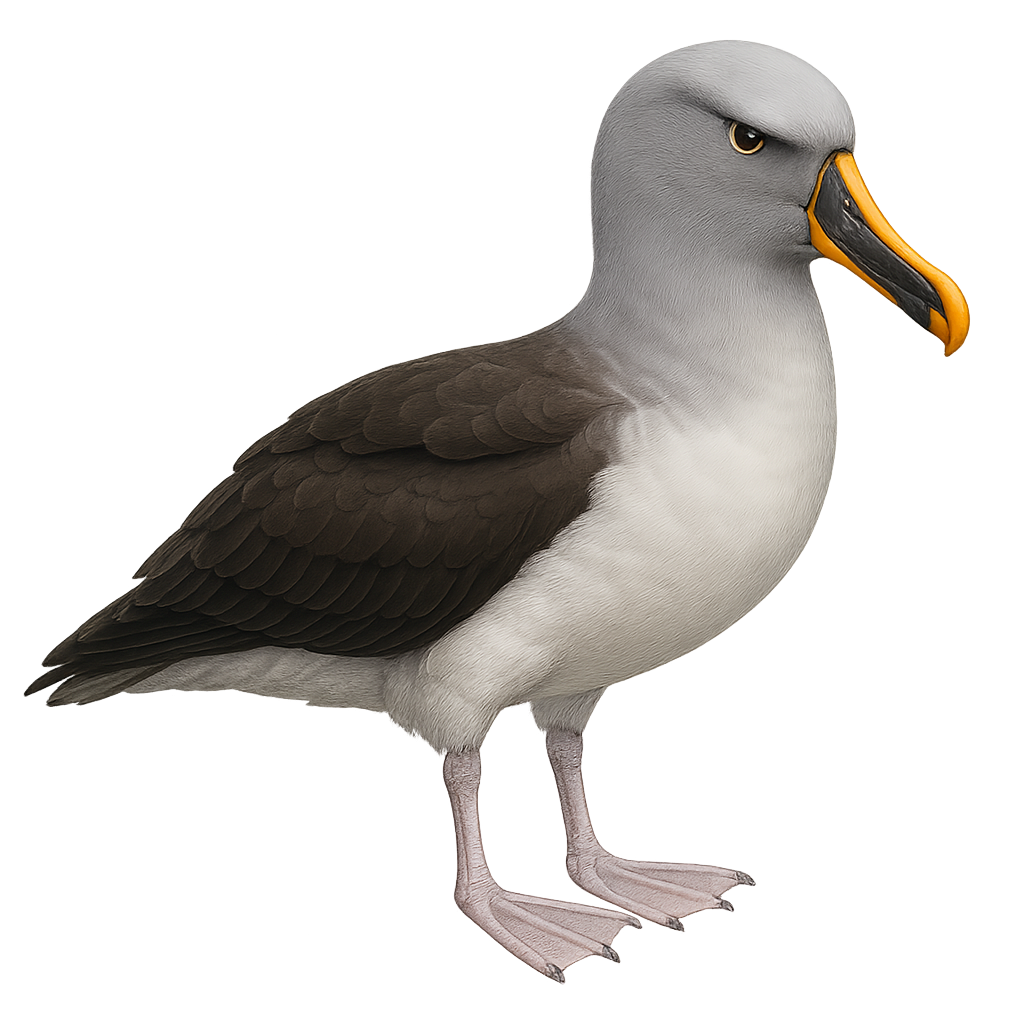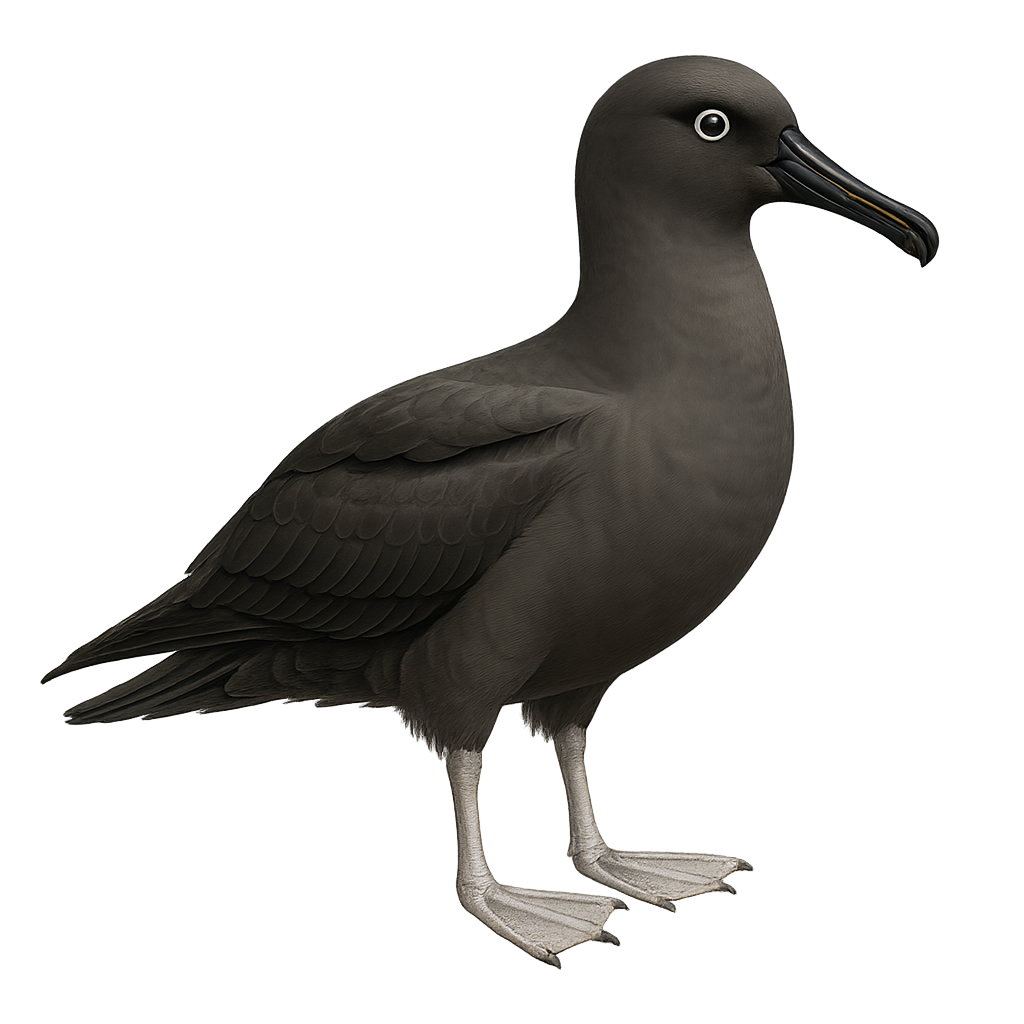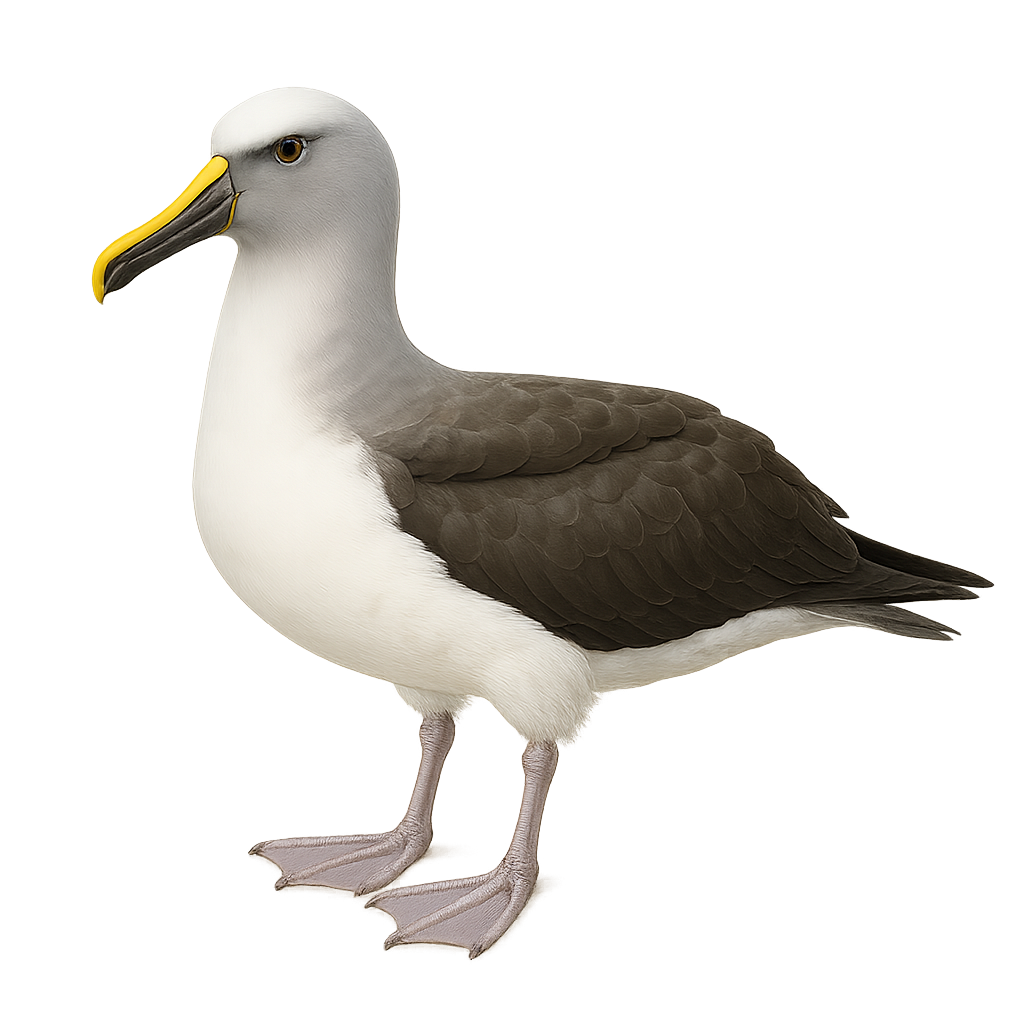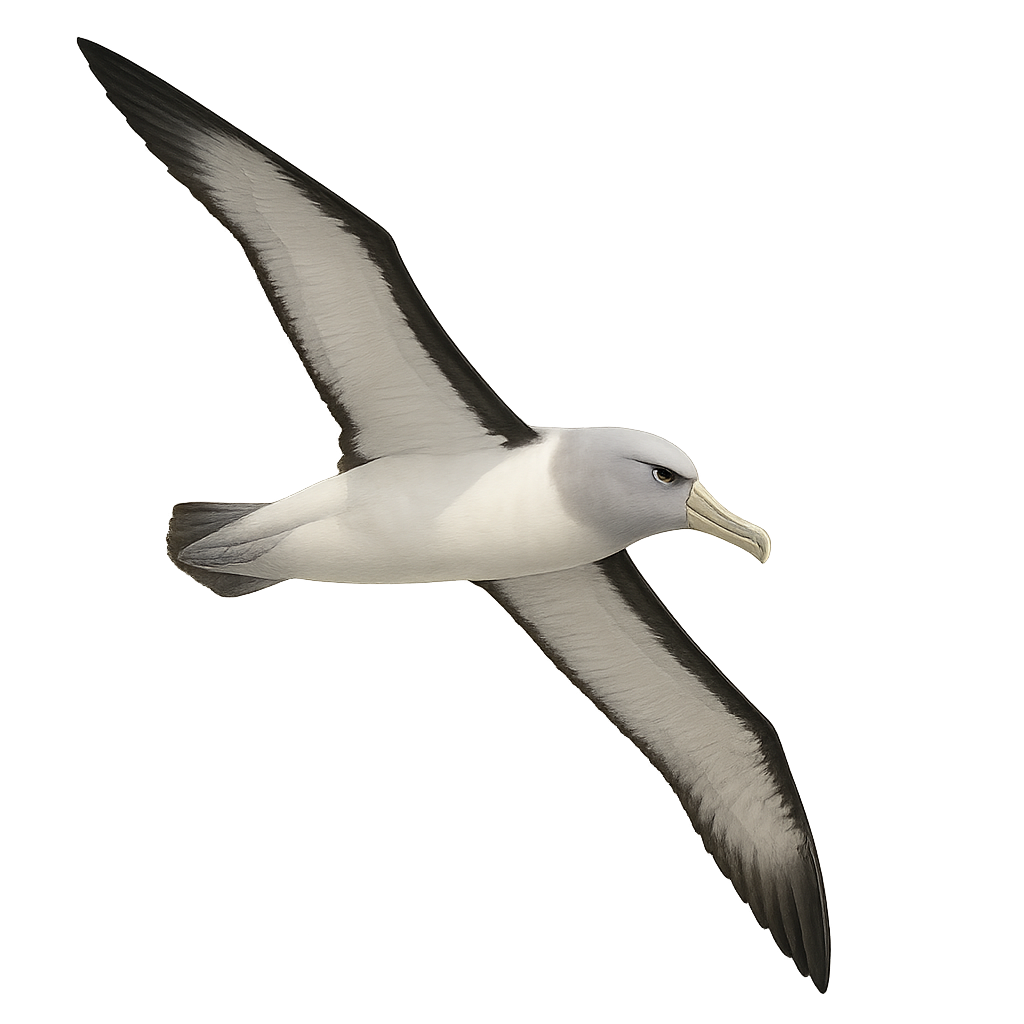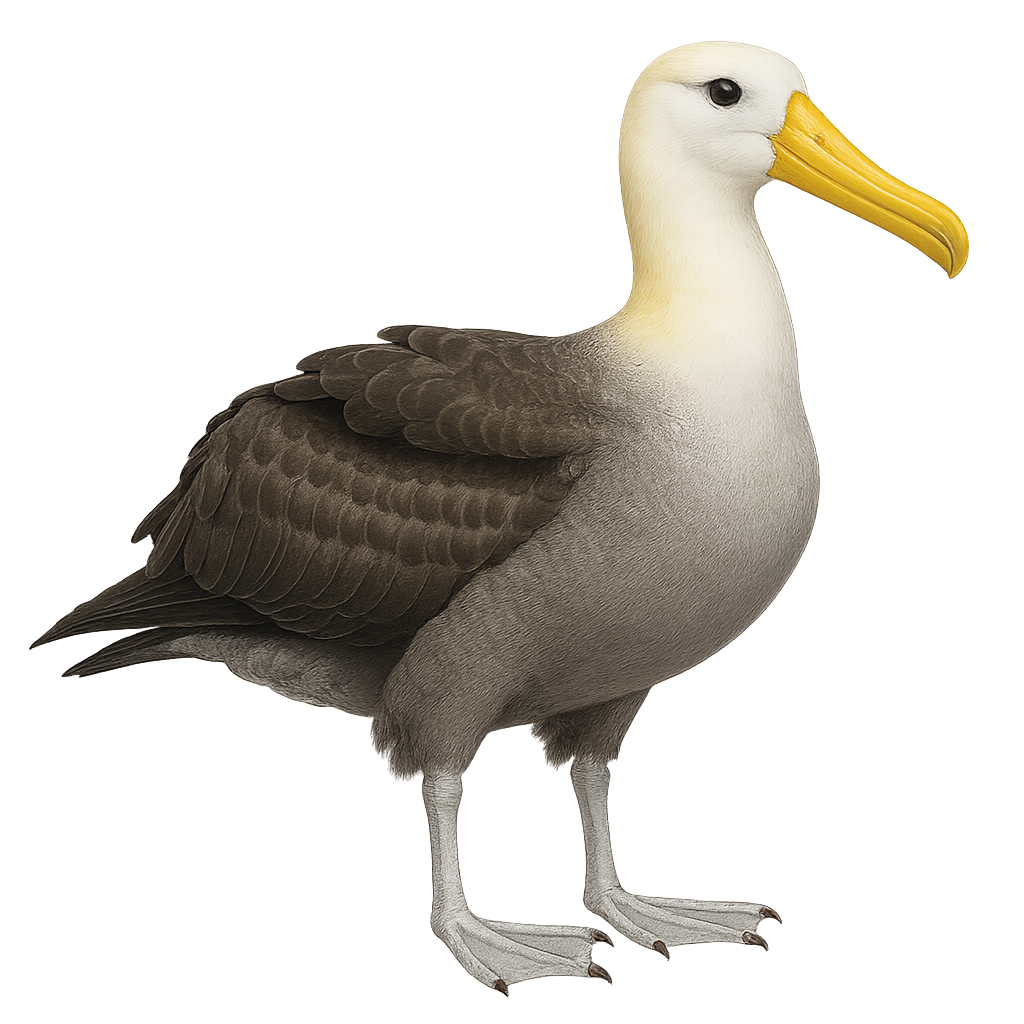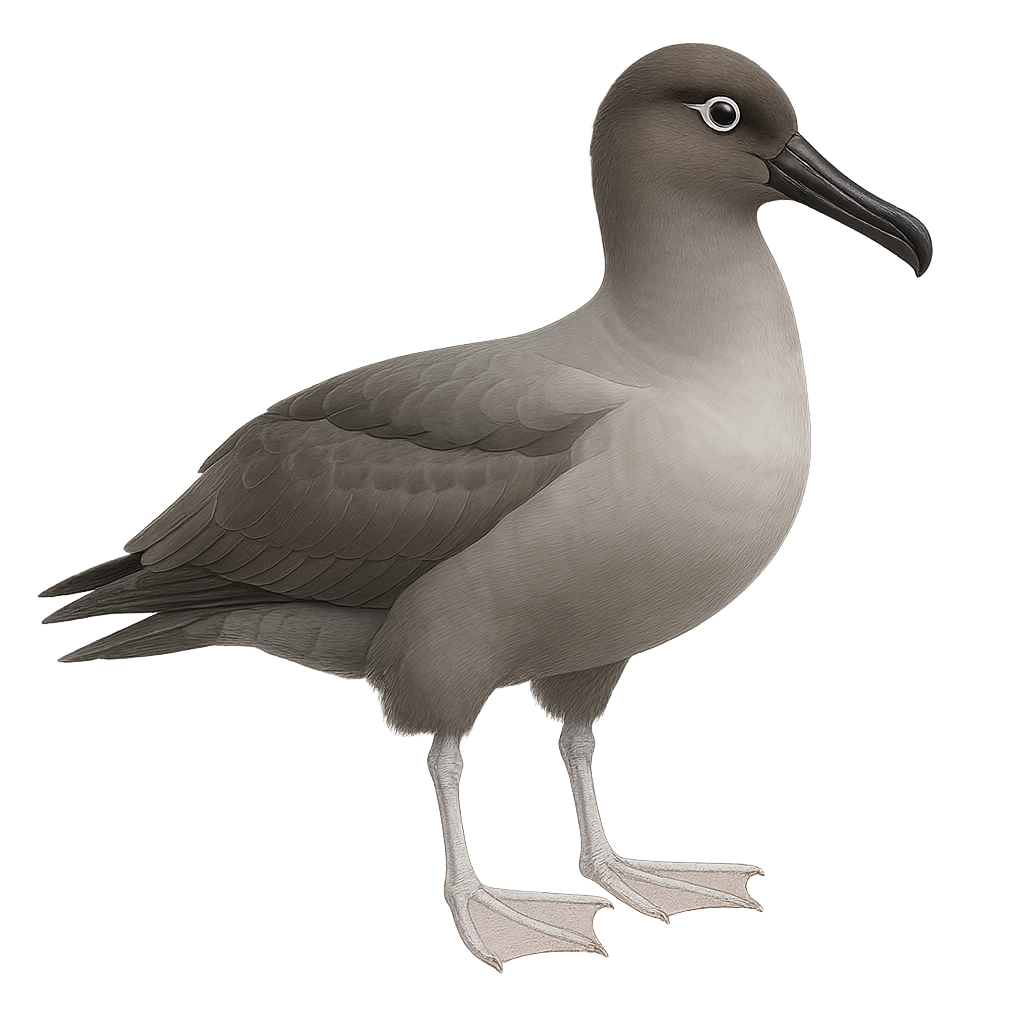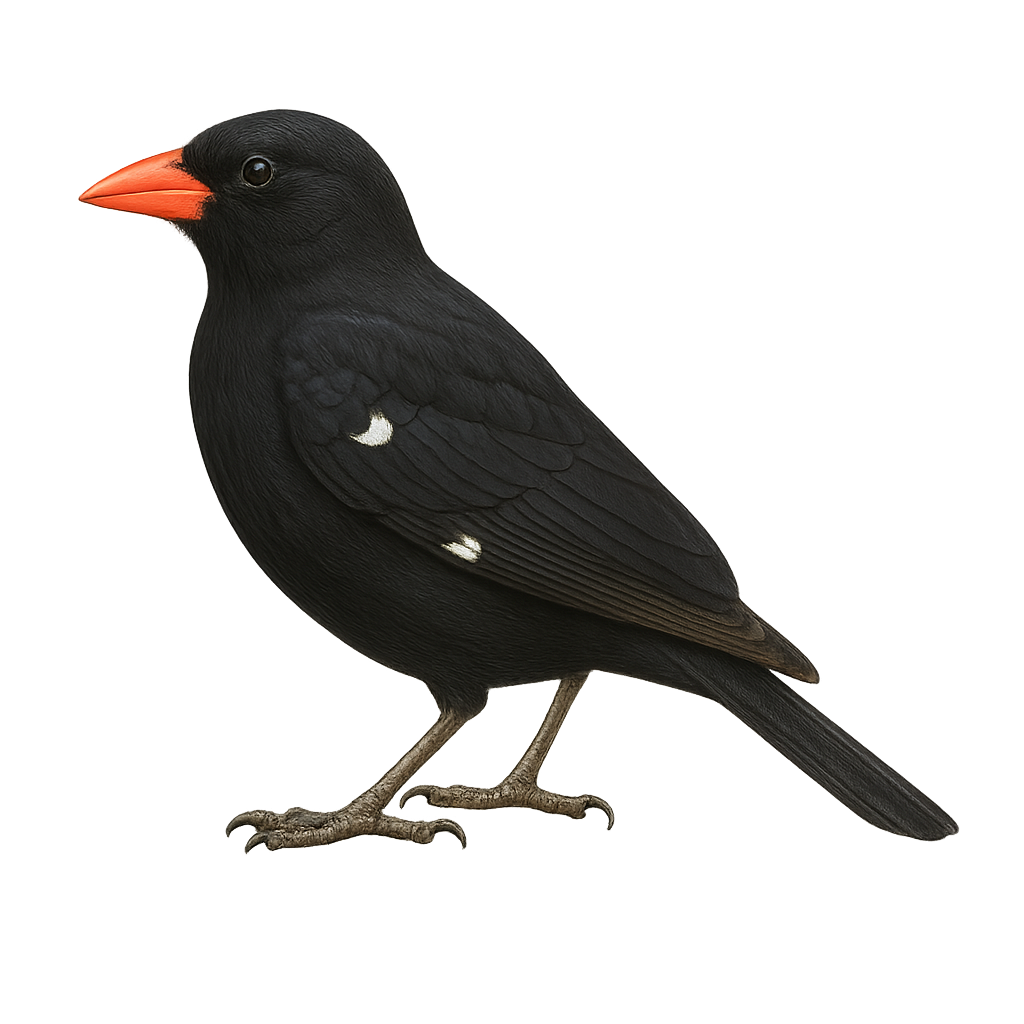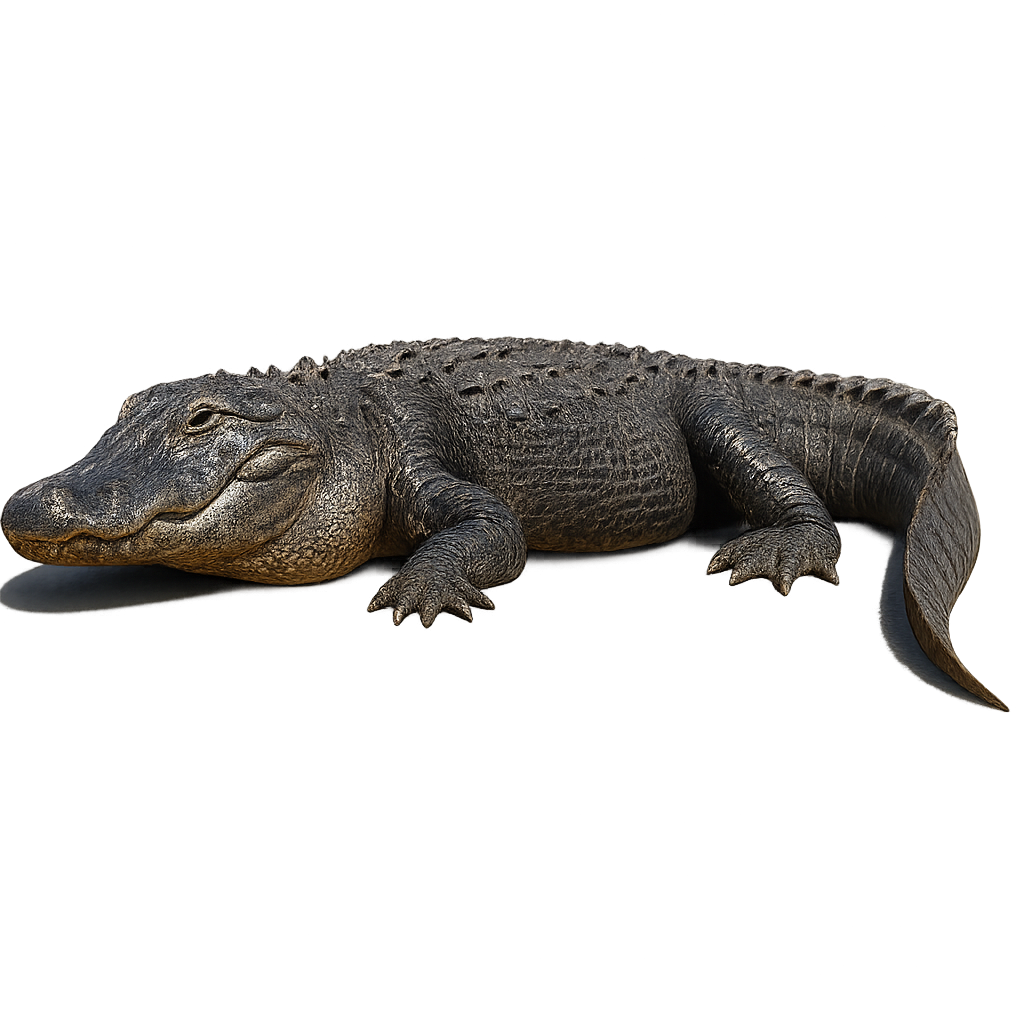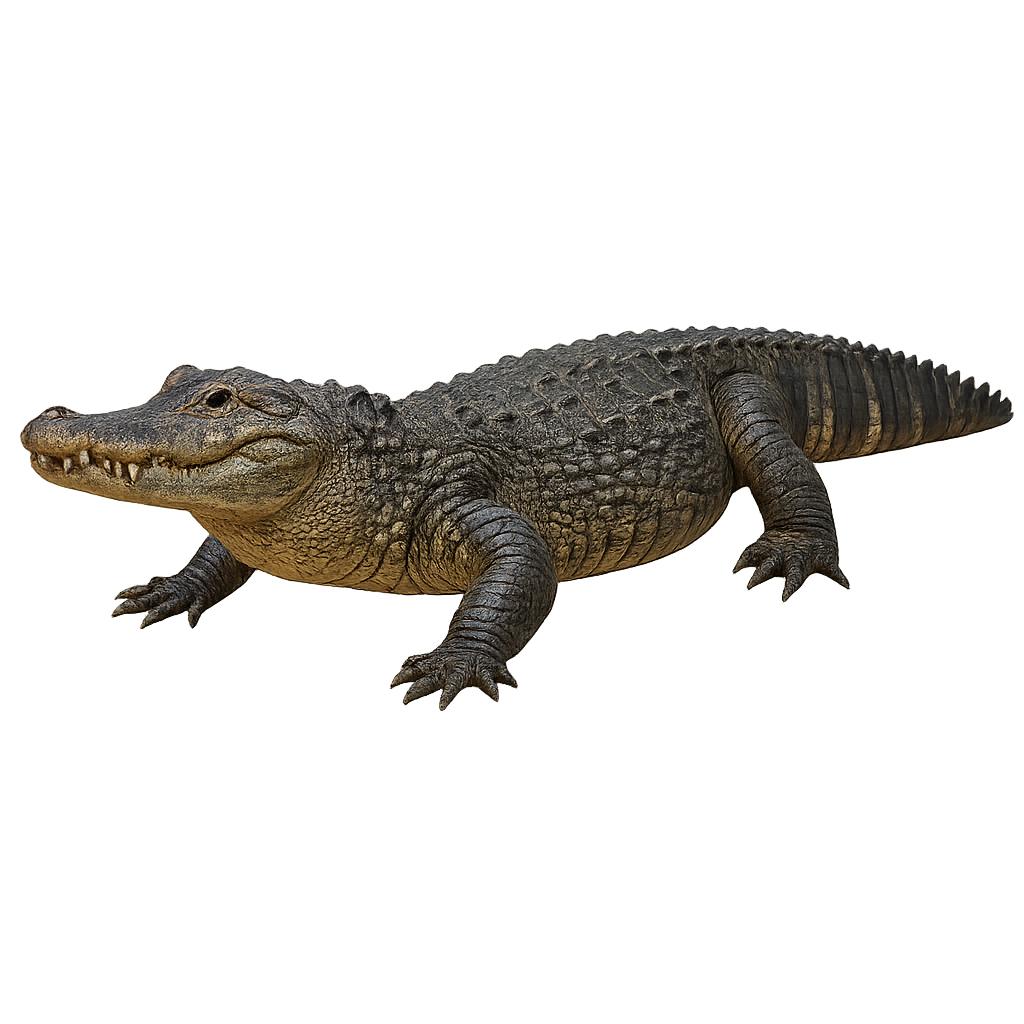The Indian Spotted Eagle, or Clanga hastata, is a medium-sized raptor primarily found in the northern plains of India and parts of Southeast Asia. It is characterized by its dark brown plumage with lighter spots and broad, rounded wings. This eagle prefers open habitats such as grasslands and agricultural areas, where it can easily spot its prey. It primarily feeds on small mammals, birds, and reptiles. Although often solitary, it can be seen in small groups during migration. Its population is declining due to habitat loss and pollution.
The Martial Eagle, Polemaetus bellicosus, is one of Africa's largest eagles, renowned for its power and majesty. It features dark brown plumage on its back and wings, while its belly is white with dark spots. Its impressive wingspan can reach up to 2.6 meters, allowing it to soar effortlessly across African skies. A formidable predator, it primarily feeds on medium-sized mammals, birds, and occasionally reptiles. It prefers savannas, open grasslands, and sparsely wooded areas. Although its status is concerning due to habitat loss and human persecution, it remains a symbol of African wildlife.
The Mountain Hawk-Eagle, Nisaetus nipalensis, is a majestic raptor primarily inhabiting the mountainous forests of Southeast Asia. This large eagle is distinguished by its dark brown plumage, broad wings, and long, barred tail. It has a distinctive crest on its head, often raised, giving it an imposing appearance. A formidable predator, it primarily feeds on small mammals, birds, and reptiles. Its keen eyesight allows it to spot prey from great distances. Although discreet, it is sometimes observed soaring above forests in search of food. The species is currently classified as near threatened due to the loss of its natural habitat.
The Black-and-white Hawk-Eagle is an elegant forest raptor of tropical America, measuring between 51 and 61 cm in length with a wingspan of 110 to 135 cm. It is distinguished by its contrasting plumage: white head, neck, and underparts; black wings and back; and a tail barred with black and white. A small black crest adorns its head, and a black band crosses its yellow eyes. This predator inhabits humid tropical forests, forest edges, and open woodlands from southern Mexico to northern Argentina. It primarily hunts arboreal birds like toucans and parrots, but also preys on mammals, reptiles, and amphibians. Although listed as Least Concern by the IUCN, it is sensitive to deforestation and habitat fragmentation.
The Ornate Hawk-Eagle is a forest raptor from tropical America, measuring between 58 and 67 cm in length. It features a raised black crest, rufous head and flanks, a white throat bordered with black, and a black-and-white barred underside. Juveniles have paler plumage with a white head. An agile predator, it primarily hunts medium to large birds (toucans, parrots, tinamous), arboreal mammals (squirrels, agoutis), and occasionally reptiles. It inhabits primary and secondary humid tropical forests from southern Mexico to Argentina. Deforestation and hunting have led to population declines, classifying it as Near Threatened by the IUCN.
The lesser spotted eagle is a medium-sized eagle, 62–68 cm long with a 145–165 cm wingspan, pale brown head and wing coverts contrasting with darker plumage, and usually a white 'V' on the rump. It inhabits open or lightly wooded country, feeding mainly on small mammals, birds and reptiles. During breeding, males perform undulating display flights and vocalize to attract females and defend territories.
The Tawny Eagle, or Aquila rapax, is a majestic bird of prey found mainly in sub-Saharan Africa and South Asia. This raptor is recognizable by its golden-brown plumage, broad wings, and relatively short tail. It measures between 60 and 75 cm in length with a wingspan of up to 2 meters. Preferring savannas, steppes, and semi-deserts, it primarily feeds on carrion but also hunts small mammals and birds. Its call is a piercing whistle, often heard during the breeding season. Although a solitary hunter, it can be seen in groups around carcasses.
The Golden Eagle is one of the most majestic raptors, easily recognized by its golden-brown plumage and imposing silhouette. This large eagle is widely distributed across the Northern Hemisphere, from the mountains of Europe and Asia to the more arid regions of North America. It primarily hunts medium-sized mammals but can also target larger birds. The Golden Eagle is a solitary bird, known for its flying prowess and its ability to cover great distances in search of food.
During the breeding season, the Golden Eagle performs spectacular courtship displays, where males execute aerial acrobatics to impress females.
The Western Reef Heron, Egretta gularis, is an elegant and slender bird often seen in coastal areas and estuaries. It has plumage that can range from pure white to slate gray, with a distinctive white throat. Its long legs and thin, pointed beak are perfectly adapted for hunting fish and small invertebrates in shallow waters. This bird is known for its unique hunting technique, using its wings to create shade and attract prey. Although primarily solitary, it can be seen in small groups during the breeding season. The Western Reef Heron is a fascinating sight for birdwatchers and nature enthusiasts.
The Little Blue Heron, Egretta caerulea, is an elegant and graceful bird, easily recognizable by its slate-blue plumage in adults and white in juveniles. It measures about 60 cm in length with a wingspan of 100 cm. Its long, slender bill is perfect for catching aquatic prey. It primarily inhabits wetlands, marshes, and mangroves, feeding on fish, amphibians, and insects. Its flight is slow and deliberate, with steady wing beats. The Little Blue Heron is often solitary but may gather in small colonies during the breeding season. It is widely distributed in the southern United States, Central America, and northern South America.
The Little Egret is an elegant bird, easily recognized by its pure white plumage and long black legs. It is mainly found in wetland areas of Europe, Asia, and Africa, where it hunts small fish, insects, and crustaceans. This small heron is known for its graceful behavior, moving slowly through shallow waters to spot its prey. During the breeding season, it sports spectacular nuptial plumes that add to its beauty.
The Little Egret is a social bird, often feeding in groups in marshes and lagoons, creating scenes of great beauty.
The Snowy Egret, Egretta thula, is a medium-sized, elegant waterbird easily identified by its pure white plumage and contrasting black legs with yellow feet. It has a long neck and a slender, pointed black bill, perfect for catching aquatic prey. Found mainly in wetlands, marshes, and estuaries, it feeds on fish, crustaceans, and insects. Its flight is graceful, with slow, steady wingbeats. The Snowy Egret is often seen in small groups but can also be solitary. It is known for its spectacular courtship displays, where it fans its feathers to attract a mate.
The Reddish Egret, Egretta rufescens, is an elegant and distinctive bird known for its unique plumage and dynamic hunting behaviors. It exhibits two color morphs: a dark form with slate-gray body and rufous head, and a white form that is entirely white. This bird is primarily found in coastal areas of the Americas, frequenting salt marshes, lagoons, and mangroves. Its hunting behavior is particularly fascinating, as it often runs after its prey with wings spread, creating shadows to lure fish. Although its conservation status is concerning, it remains an iconic species of coastal ecosystems.
The Pacific Reef Heron, Egretta sacra, is an elegant and slender bird often seen along the coasts and coral reefs of Southeast Asia and Oceania. It exhibits two plumage morphs: one entirely white and the other slate gray. This species is particularly adapted to coastal life, feeding mainly on fish, crustaceans, and aquatic insects. It is often seen alone or in small groups, patrolling the shores in search of food. The Pacific Reef Heron is known for its unique hunting technique, using its wings to create shade and attract prey. Although its habitat is threatened by coastal development, it is currently listed as of least concern by the IUCN.
The Tricolored Heron, Egretta tricolor, is a graceful and slender bird, recognizable by its distinctive slate-blue, white, and brown plumage. It measures about 56 to 76 cm in length with a wingspan of 96 to 115 cm. Its long, thin bill is ideal for catching fish and crustaceans in shallow waters. It is primarily found in marshes, mangroves, and estuaries of coastal regions in North, Central, and South America. The Tricolored Heron is a gregarious bird, often seen in small groups. It is known for its active hunting technique, running and flapping its wings to scare its prey.
The Rufous-headed Babbler, or Pellorneum ruficeps, is a small, elusive bird found primarily in the tropical forests of Southeast Asia. Its distinctive rufous head contrasts with its dull brown body, allowing it to blend seamlessly into its wooded surroundings. This bird prefers dense undergrowth where it can move stealthily in search of insects and small invertebrates. Although often heard due to its melodious song, it is rarely seen as it hides in thick foliage. The Rufous-headed Babbler is a social bird, often observed in small groups, and plays a crucial role in the ecosystem by controlling insect populations.
The Warbling Antbird, Hypocnemis cantator, is a small bird from the Thamnophilidae family, primarily found in the humid tropical forests of South America. It is recognizable by its brown and white plumage, with distinctive patterns on its head and back. This bird is often heard before it is seen, thanks to its melodious and repetitive song. It primarily feeds on insects and other small invertebrates found in the forest litter. The Warbling Antbird is a territorial bird, usually living in pairs or small family groups. It is known for its discretion and ability to blend into its dense, leafy environment.
The Atlantic Yellow-nosed Albatross, Thalassarche chlororhynchos, is a medium-sized seabird known for its bright yellow bill and long, narrow wings. It has predominantly white plumage with dark wings and a grey head. This albatross breeds mainly on islands in the South Atlantic, forming dense colonies. It is renowned for its long gliding flights over the ocean, using air currents to travel vast distances with minimal effort. Although an excellent navigator, it is threatened by longline fishing and marine pollution.
The Black-footed Albatross, Phoebastria nigripes, is a large seabird belonging to the Diomedeidae family. It is distinguished by its dark plumage, almost entirely black except for some white feathers around the beak and eyes. Its beak is strong and hooked, ideal for catching marine prey. This albatross is primarily found in the North Pacific, where it feeds on fish, squid, and crustaceans. Known for its long gliding flights over the ocean, it uses air currents to travel great distances with minimal effort. The species is monogamous, forming lasting pairs that return annually to the same nesting sites.
The black-browed albatross is a large seabird in the family Diomedeidae, measuring 90–100 cm in length with narrow wings spanning 200–230 cm, and characterized by a pale head marked by black brow streaks. It inhabits temperate to subantarctic oceanic waters and coastal areas, feeding mainly on fish and squid captured at the surface or by shallow dives, and breeds in large colonies on subantarctic islands. During the breeding season, pairs nest on coastal cliffs or grasslands and lay a single egg.
The Grey-headed Albatross, or Thalassarche chrysostoma, is a majestic seabird known for its grey head and bright yellow bill. It primarily inhabits the southern hemisphere's oceans, favoring cold and temperate waters. This albatross is an excellent glider, using air currents to travel long distances with minimal effort. It feeds mainly on fish, squid, and crustaceans, which it skillfully captures by diving. Breeding occurs on remote islands, where it builds mound-shaped nests. Although sociable at sea, it becomes territorial during the breeding season. Unfortunately, the species is threatened by longline fishing and climate change, which affect its food resources and nesting sites.
The Sooty Albatross, Phoebetria fusca, is a medium-sized seabird belonging to the Diomedeidae family. It is primarily found in subantarctic regions and is recognizable by its dark brown plumage and long, narrow wings. This albatross is an excellent glider, capable of covering long distances over the oceans thanks to its wings adapted for cruising flight. It nests on steep, often isolated cliffs and feeds mainly on squid and fish. Its population is currently threatened by longline fishing and habitat degradation.
The Buller's Albatross, Thalassarche bulleri, is a medium-sized seabird belonging to the Diomedeidae family. It is primarily found in the southern Pacific Ocean, especially around New Zealand. This albatross is distinguished by its silver-gray plumage on the back and wings, contrasting with a pure white belly. Its beak is bright yellow with a black tip, and its eyes are ringed with black, giving it a piercing look. It mainly feeds on fish and squid, which it captures by skillfully diving into the water. The Buller's Albatross is known for its long gliding flights over the waves, using air currents to travel great distances with minimal effort.
The Salvin's Albatross is a majestic seabird belonging to the Diomedeidae family. It is primarily observed in the waters of the Southern Ocean, particularly around subantarctic islands. This albatross is distinguished by its silvery-grey plumage and white head, with a pale yellow bill. It has long, slender wings that allow it to glide over vast distances above the ocean. The Salvin's Albatross feeds mainly on fish, squid, and crustaceans, which it captures by diving into the water. Although it is an excellent glider, it is vulnerable to environmental changes and industrial fishing, leading to its classification as a near-threatened species by the IUCN.
The Waved Albatross, or Phoebastria irrorata, is a remarkable seabird native to the Galápagos Islands. Known for its striking white and brown plumage, it features a bright yellow bill and long, narrow wings designed for gliding over vast oceanic distances. This albatross is famous for its elaborate courtship displays, where pairs engage in synchronized dances. Primarily monogamous, it forms lasting bonds with its mate. It feeds mainly on fish and squid, diving into the ocean to catch its prey. Unfortunately, this species is threatened by industrial fishing and climate change, which impact its food sources and nesting sites.
The Light-mantled Albatross, Phoebetria palpebrata, is an elegant and graceful seabird, easily recognizable by its dark plumage and lighter back. It has long, slender wings that allow it to glide over vast ocean distances. This albatross primarily nests on subantarctic islands, forming colonies on steep cliffs. It feeds mainly on fish, squid, and crustaceans, which it skillfully captures by diving into the water. Although its flight is majestic, it is often solitary at sea. Its population is currently stable, but it remains vulnerable to threats such as longline fishing and marine pollution.
The Royal Albatross is one of the largest and most majestic species of albatross, easily recognizable by its long, tapered wings that can span up to 3 meters. This seabird, which frequents the Australian and Antarctic oceans, is a master of gliding flight, capable of covering vast distances without flapping its wings. The Royal Albatross hunts fish and squid, which it captures with great precision by diving from the air.
During the breeding season, the Royal Albatross performs complex courtship dances to attract a mate, an impressive display that reflects the majesty of this bird.
The Buffalo Weaver, or Bubalornis niger, is a medium-sized African bird belonging to the Ploceidae family. It is primarily black with glossy highlights, and males have striking red eyes. This bird is known for its massive, ball-shaped nests, often built in colonies on thorny trees or artificial structures. It feeds mainly on seeds, insects, and small invertebrates. The Buffalo Weaver is a social bird, often seen in groups. It is widespread in the savannas and dry woodlands of sub-Saharan Africa. Although common, it is fascinating for its social behaviors and nest-building techniques.
The American Alligator d'Amérique, often simply referred to as the Mississippi Alligator d'Amérique, is an imposing and formidable reptile, easily recognizable by its dark skin and sharp eyes. It primarily inhabits the swamps, rivers, and lakes of the southeastern United States, where it is a top predator in the food chain. The alligator is an opportunistic hunter, feeding on fish, birds, small mammals, and even carrion. It has a remarkable ability to adapt and can survive in various environments, from freshwater swamps to salty coastal areas.
During the breeding season, males emit powerful calls that echo through the swamps to attract females, and nests are built in strategic locations to maximize egg protection.
Native to the rivers and swamps of the Yangtze in China, the Chinese alligator is one of the rarest and most endangered alligator species in the world. It has a smaller size compared to the American alligator, with a maximum length of around 2.5 meters. This reptile primarily feeds on fish, crustaceans, and small mammals. Due to habitat loss and hunting, the Chinese alligator is now classified as critically endangered.


